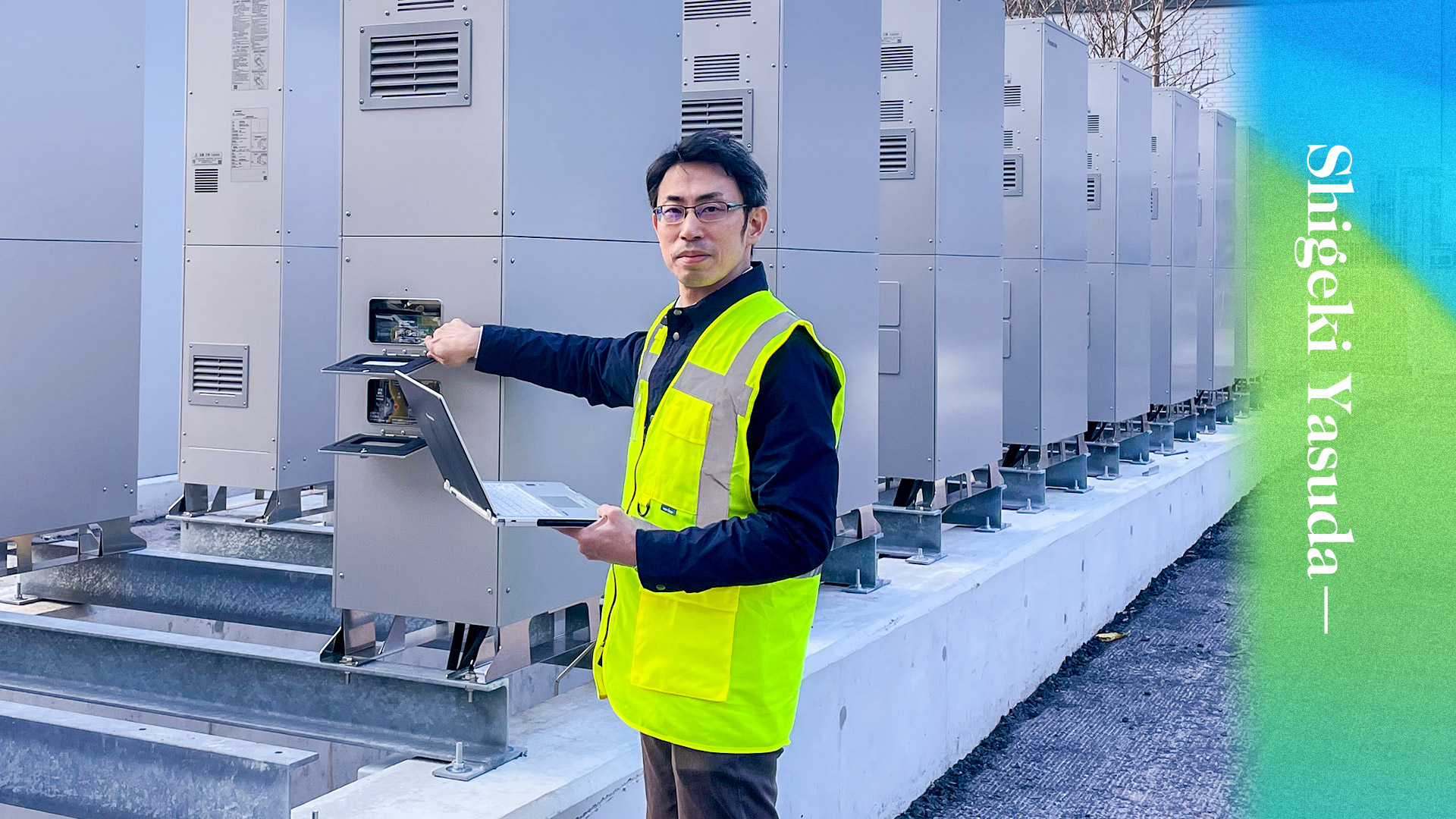-
Principles of producing “nanoe”
PM2.5 particles are a type of air pollutant with a diameter of 2.5μm or smaller, that remain suspended in the air. Because they are so small, they travel deeper into our lungs, making it very difficult for us to get rid of them once inhaled, thereby causing health problems such as asthma and bronchitis. It is also said that these particles may cause cancer. Yellow Sand, which originates in the deserts and dry regions in inner East Asia and reaches as far as Japan, contain PM2.5 components as well as fungi and bacteria, which are believed to cause allergies.
Panasonic Corporation conducted a study on PM2.5 components and fungi attached to Yellow Sand to test the effect of nano-sized electrostatic atomized water particles, “nanoe.”
[PM2.5 components]
-
Polycyclic aromatic hydrocarbons (5 types)
Exposed polycyclic aromatic hydrocarbons (5 types) to nanoe inside a 36L box.
Decomposed 78 to 97% in 8 hours.
-
Alkane (hexadecane)
In a room approximately 10m2, alkane (hexadecane) was set up 1.5m away from the nanoe device. Decomposed 99% of alkane (hexadecane) after 24-hour exposure.
-
Aromatic carboxylic acids (benzoic acid)
In a room approximately 10m2, aromatic carboxylic acids (benzoic acid) was set up 1.5m away from the nanoe device. Decomposed 98% of aromatic carboxylic acids (benzoic acid) after 8-hour exposure.
[Fungi attached to Yellow Sand]
-
Bjerkandera
In a room approximately 10m2, bjerkandera fungi was set up 1.5m away from the nanoe device. Decomposed 99% of bjerkandera fungi after 8-hour exposure.
*1 Nano-sized electrostatic atomized water particles created by applying high voltage to water.
*2 There are over 100 types of chemical substances some of which have carcinogenic, mutagenic, and/or teratogenic properties.
*3 Composites of gasoline and diesel fuel.
*4 An organic compound created when carboxyl radicals become directly bound to benzene rings.Research conducted by
*5 This basidiomycete or fungi may cause chronic coughing.
*The experiments were conducted in a closed environment. Results in regular environments will differ.
[Press inquiries]
Appliances Company, Technological Headquarters, HA Development Center
TEL: 077-567-9925
Hours: Weekdays 9:00 – 17:00
[Decomposition of PM2.5 components]
-
Results of experiments with polycyclic aromatic hydrocarbons (5 types)
We performed tests to monitor the effect of “nanoe,” nano-sized electrostatic atomized water particles, on potentially carcinogenic polycyclic aromatic hydrocarbons (5 types) found in PM2.5.
-
Research conducted by: Panasonic Corporation Analysis Center
-
Relevant period: October 2013 to January 2014
-
Relevant substances: Benzo(a)pyrene, benz(a)anthracene, benzo(b)fluoranthene, indeno(1, 2, 3-cd)pyrene, dibenz(a,h)anthracene.
-
Device used: Nanoe device
-
Method used: Exposed 500μg of substance to “nanoe” inside a 36L box. Compared peak areas of polycyclic aromatic hydrocarbons using gas chromatography-mass spectrometry.
-
Results: (Substance/time/decomposition ratio)
-
Benzo(a)pyrene/8 hours/97%
-
Benz(a)anthracene/8 hours/78%
-
Benzo(b)fluoranthene/8 hours/79%
-
Indeno(1, 2, 3-cd)pyrene/8 hours/97%
-
Dibenz(a,h)anthracene/8 hours/81%
*According to Panasonic calculations.
-
Alkane (hexadecane)
We performed tests to monitor the effect of “nanoe,” nano-sized electrostatic atomized water particles on alkane (hexadecane formerly known as cetane) found in PM2.5 (gasoline, diesel exhaust gas), which is believed to cause petroleum odor.
-
Research conducted by: Panasonic Corporation Analysis Center
-
Relevant period: October 2013 to January 2014
-
Relevant substance: Alkane (hexadecane)
-
Device used: Nanoe device
-
Method used: Set a petri dish containing 625μg of the substance 1.2m above the floor and 1.5m away from the nanoe device in a room approximately 10m2 and exposed it to “nanoe.” Compared peak areas of alkane (hexadecane) using gas chromatography-mass spectrometry.
-
Results: (Substance/time/decomposition ratio)
-
Alkane (hexadecane)/24 hours/99%
*According to Panasonic calculations.
-
Aromatic carboxylic acids (benzoic acid)
We performed tests to monitor the effect of “nanoe,” nano-sized electrostatic atomized water particles, on aromatic carboxylic acids (benzoic acid) found in PM2.5, which is believed to cause acid rain.
-
Research conducted by: Panasonic Corporation Analysis Center
-
Relevant period: October 2013 to January 2014
-
Relevant substance: Aromatic carboxylic acids (benzoic acid)
-
Device used: Nanoe device
-
Method used: Set a petri dish containing 625μg of the substance 1.2m above the floor and 1.5m away from the nanoe device in a room approximately 10m2 and exposed it to “nanoe.” Compared peak areas of aromatic carboxylic acids (benzoic acid) using gas chromatography-mass spectrometry.
-
Results: (Substance/time/decomposition ratio)
-
Aromatic carboxylic acids (benzoic acid)/8 hours/98%
*According to Panasonic calculations.
[Inhibiting growth of fungi carried by Yellow Sand]
-
Bjerkandera
We performed tests to monitor the effect of “nanoe,” nano-sized electrostatic atomized water particles on bjerkandera, fungi attached to Yellow Sand, which are believed to cause allergies.
-
Research conducted in cooperation with: Kanazawa University
-
Relevant period: October 2013 to December 2013
-
Relevant substance: Bjerkandera adusta
-
Device used: Nanoe device
-
Method used: Set a gauze doused with fungal suspension 1.2m above the floor and 1.5m away from the nanoe device in a room approximately 10m2 and exposed it to “nanoe.” After exposure, fungi were retrieved from the gauze, and the amount of fungi was measured using the fluorescence method.
-
Results: (Substance/time/decomposition ratio)
-
Bjerkandera adusta/8 hours/over 99%
*According to Panasonic calculations.
A comment from Mr. Teruya Maki, Associate Professor of Kanazawa University, College of Science and Engineering, School of Chemistry
Through these experiments we found that “nanoe,” nano-sized electrostatic atomized water particles inhibits the growth of bjerkandera, a fungi attached to Yellow Sand, which causes allergic reactions. “Nanoe” technology has the potential to improve the quality of the indoor environment by addressing issues such as Yellow Sand.
How nano-sized electrostatic atomized water particles, “nanoe,” can be produced
By cooling the atomizing electrode with a peltier device, which causes dew condensation of moisture in the air to generate water, and by applying high voltage between the atomizing and the counter electrodes, nano-sized electrostatic atomized water particles of approximately 5 – 20 nm in size (nanoe™) can be produced.
Related Links:
nanoe products

